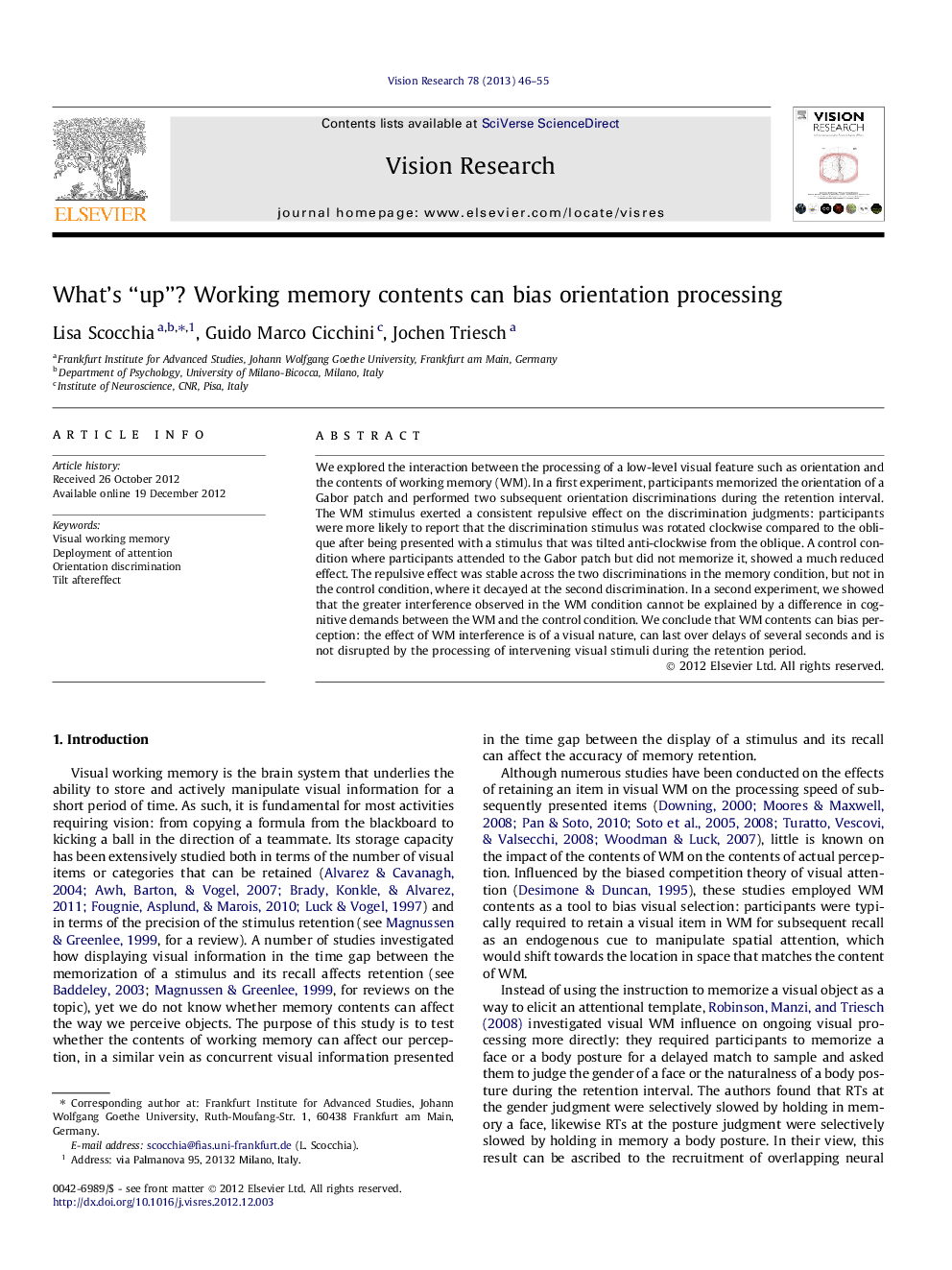| Article ID | Journal | Published Year | Pages | File Type |
|---|---|---|---|---|
| 4033855 | Vision Research | 2013 | 10 Pages |
We explored the interaction between the processing of a low-level visual feature such as orientation and the contents of working memory (WM). In a first experiment, participants memorized the orientation of a Gabor patch and performed two subsequent orientation discriminations during the retention interval. The WM stimulus exerted a consistent repulsive effect on the discrimination judgments: participants were more likely to report that the discrimination stimulus was rotated clockwise compared to the oblique after being presented with a stimulus that was tilted anti-clockwise from the oblique. A control condition where participants attended to the Gabor patch but did not memorize it, showed a much reduced effect. The repulsive effect was stable across the two discriminations in the memory condition, but not in the control condition, where it decayed at the second discrimination. In a second experiment, we showed that the greater interference observed in the WM condition cannot be explained by a difference in cognitive demands between the WM and the control condition. We conclude that WM contents can bias perception: the effect of WM interference is of a visual nature, can last over delays of several seconds and is not disrupted by the processing of intervening visual stimuli during the retention period.
► The orientation of Gabor stimuli was judged after memorizing or attending to Gabors. ► The first stimulus orientation caused misperceptions of subsequent orientations. ► Misperceptions were greater in memory than in control conditions. ► Differences in cognitive demands between tasks cannot explain the results. ► WM contents can interfere with the processing of low-level stimulus features.
